How to Make Money with AI Art
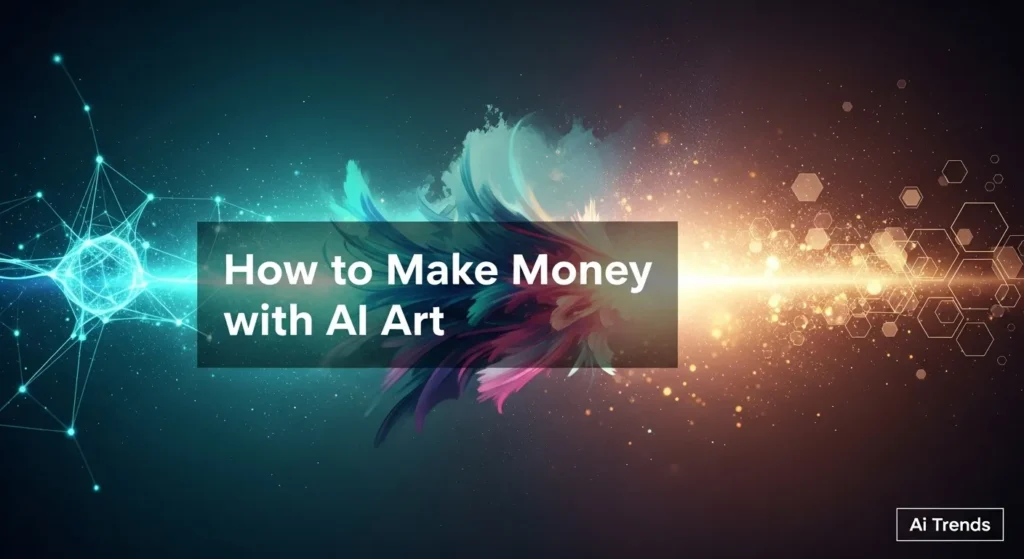
The world of art is undergoing a revolutionary transformation, driven by the incredible capabilities of Artificial Intelligence. What once seemed like science fiction is now a tangible reality: AI can generate stunning, original artwork in moments, opening up unprecedented opportunities for creatives and entrepreneurs alike. If you’ve ever dreamed of monetizing your artistic flair but felt limited by traditional methods, learning how to make money with AI art offers a groundbreaking pathway.
This comprehensive guide will dive deep into actionable strategies to make money with AI art. From selling unique printable products and illustrating children’s books to launching a captivating faceless YouTube channel, creating bespoke wall painting services, and mastering AI design tools for graphic design, we’ll cover the tools, workflows, and marketing secrets you need to turn your AI-powered creativity into a sustainable income stream. Get ready to explore the exciting frontier where art meets artificial intelligence, and discover how you can carve out your niche in this booming digital economy.
The AI Art Revolution: Unlocking Opportunities to Make Money with AI Art
Artificial Intelligence has democratized art creation, enabling anyone with an idea to generate sophisticated visuals without years of technical training. Tools like Midjourney, NanoBana, and Sora 2 have changed the game, allowing users to create everything from hyper-realistic images to abstract masterpieces with simple text prompts. This technological leap isn’t just a novelty; it’s a powerful engine for new business models and income opportunities, enabling you to make money with AI art.
The beauty of AI art lies in its speed, versatility, and ability to iterate quickly. This means you can experiment with styles, concepts, and designs at a pace unimaginable with traditional art forms. For entrepreneurs, this translates into reduced production costs, faster market entry, and the ability to scale creative output dramatically. Whether you’re an artist looking to enhance your workflow or a complete beginner eager to tap into a new market, learning to make money with AI art provides a fertile ground for innovation and profit.

Monetization Strategy 1: Make Money with AI Art by Selling Printable Products
One of the most accessible and popular ways to make money with AI art is by creating and selling printable products. This vast market includes everything from digital wall art and greeting cards to planners, stationery, custom invitations, and even unique T-shirt designs. The process leverages AI’s ability to generate diverse aesthetics quickly, allowing you to cater to a wide range of tastes and niches.
Step-by-Step Guide to Selling Printable AI Art:
- 1. Idea Generation & Niche Selection: Brainstorm popular themes (e.g., minimalist art, abstract landscapes, pet portraits, inspirational quotes). Use AI tools for brainstorming concepts and keyword research to identify high-demand niches.
- 2. AI Art Generation: Use AI image generators like Midjourney, Nano Banana, or Stable Diffusion. Focus on high-resolution outputs suitable for printing. Experiment with different styles, aspect ratios, and intricate details.
- 3. Refinement & Upscaling: AI-generated images often need minor adjustments. Use graphic design software such as Canva, Adobe Photoshop, GIMP, or Photopea to: – Adjust colors, contrast, and brightness. – Remove imperfections. – Upscale images to print-ready resolutions (e.g., 300 DPI for standard prints). – Add text or watermarks if necessary.
- 4. Productization: Create various product mockups to showcase your art in a professional context (e.g., framed art on a wall, T-shirt mockups, planner layouts). Package your digital files in common formats like JPG, PNG, and PDF, ensuring different aspect ratios (e.g., 2:3, 3:4, 4:5, 5:7, 11:14) for different frame sizes.
- 5. Platform Selection & Listing: Choose marketplaces to sell your printables. Popular options include: – Etsy: Ideal for unique, handcrafted, and digital art products. – Creative Market: A curated marketplace for designers and artists to sell digital assets. – Gumroad: Simple platform for selling digital products directly to your audience. – Printify/Printful: For print-on-demand products like T-shirts, mugs, phone cases, where you design, and they handle printing and shipping. – Redbubble/Society6: Similar to Print-on-Demand, offering a wider range of products.
Tools Used:
- AI Image Generators: Midjourney, DALL-E 3, Stable Diffusion, Pippit, OpenArt Ai
- Image Editors: Canva, Adobe Photoshop, GIMP, Photopea
- Upscalers: Topaz Gigapixel AI, Remini, online AI upscalers
- Mockup Generators: Placeit.net, Canva Pro
Beyond Prints: AI-Illustrated Children’s Storybooks
This is a fantastic niche for AI art. You can create entire children’s books with unique illustrations. The workflow typically involves:
- Story Conception: Develop a simple, engaging story idea. Use AI (e.g., ChatGPT) to help brainstorm plot points or even draft initial text.
- Character & Scene Generation: Use AI art tools to generate consistent characters and diverse scenes that match your story’s narrative. Focus on a distinct, child-friendly art style.
- Text Integration: Write your story, keeping the language simple and age-appropriate. Integrate the text with your AI illustrations using design software like Canva or Adobe InDesign.
- Publishing: Publish your AI-illustrated children’s storybooks on global marketplaces like Amazon Kindle Direct Publishing (KDP). KDP makes it easy to self-publish ebooks and print-on-demand paperbacks, reaching a massive global audience. This is another fantastic way to make money with AI art in the publishing sphere.

Monetization Strategy 2: How to Make Money with AI Art on YouTube
Faceless YouTube channels are exploding in popularity because they allow creators to produce engaging content without ever appearing on camera. AI tools can automate nearly every aspect of content creation, from scriptwriting to video generation, making this an incredibly scalable business model to make money with AI art.
Choosing a Profitable Niche:
- Children’s Stories: Narrated AI-illustrated tales (as mentioned above).
- Historical and Scientific Storytelling: Visualize complex historical events or scientific concepts with AI-generated imagery and animations. Think documentaries without human presenters.
- Motivational Content: Combine inspiring quotes with calming or majestic AI visuals and soothing background music.
- Relaxation/Meditation: Create videos with ambient AI-generated visuals (e.g., abstract patterns, serene landscapes) and AI-composed meditation music.
- Educational Content: Simplify complex topics through AI-generated infographics, illustrations, and animations.
Full Method, Tools, and Workflow:
- 1. Script Writing: – Tool: ChatGPT, Gemini, Jasper AI , Ryti.me – Workflow: Input your niche and topic, ask the AI to generate a detailed script, story, or educational content. Refine for tone, clarity, and engagement.
- 2. Voiceover Generation: – Tool: ElevenLabs, Play.ht, Murf.ai. – Workflow: Paste your finalized script into a text-to-speech AI. Choose a voice that suits your channel’s niche (e.g., calm for meditation, enthusiastic for children’s stories). Download the audio files.
- 3. Image and Video Generation: – Tool: Midjourney, Stable Diffusion, OpenArt Ai (for images), Veed, Kling, HeyGen , invideo ,(for AI video clips/animations). or Go The 15+ Best AI Video Generators of 2025
– Workflow: Use prompts derived from your script to generate relevant images or short video clips. For static image channels, generate a series of images that flow with the narration. For dynamic channels, create short, animated sequences or utilize AI video generation for specific scenes. Discover the best AI video generators.
- 4. Music Generation: – Tool: Soundraw, AIVA, Epidemic Sound (for royalty-free tracks), Artlist. – Workflow: Generate or select background music that complements your video’s mood and topic. Ensure you have the rights for commercial use.
- 5. Video Editing: – Tool: CapCut, DaVinci Resolve (free), Adobe Premiere Pro, InVideo. – Workflow: Combine your voiceover, AI images/videos, and music. Add text overlays, transitions, and any necessary sound effects. Ensure smooth pacing and professional polish.
- 6. Uploading & Growth: – Workflow: Upload your video to YouTube. Optimize your title, description, and tags with relevant keywords. Create an engaging thumbnail (AI-assisted, of course!). Promote your channel on social media, interact with your audience, and consistently upload high-quality content to grow your viewership.
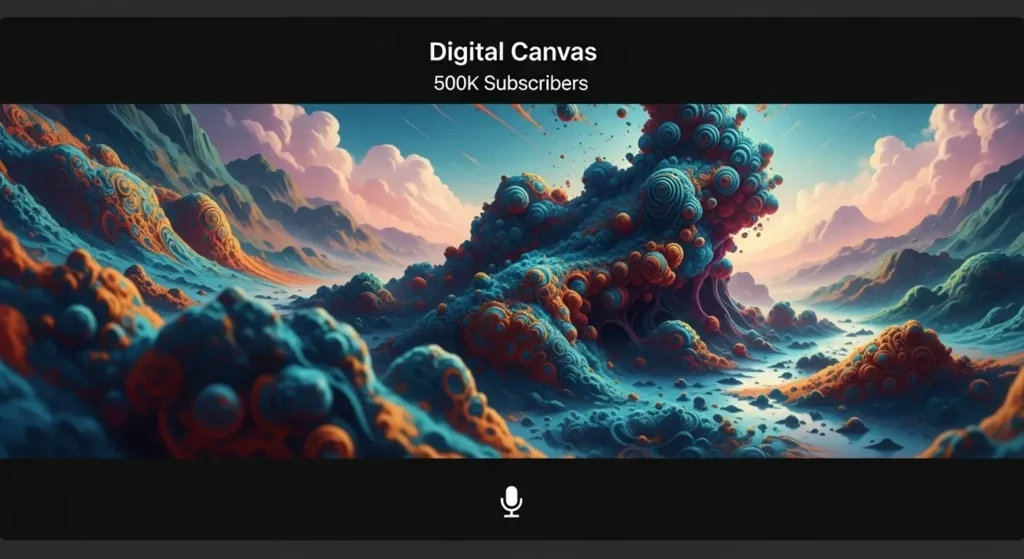
Monetization Strategy 3: Make Money with AI Art through Wall Painting
Imagine transforming ordinary walls into breathtaking canvases, each piece uniquely designed with the help of AI. An AI-style wall painting service offers bespoke, large-scale art solutions for homes, offices, and commercial spaces, presenting a unique way to make money with AI art. This niche combines digital creativity with a hands-on approach, appealing to clients looking for truly unique interior design elements.
How to Design Wall Art Using AI Tools:
- 1. Client Consultation: Understand the client’s vision: desired theme, style (e.g., abstract, mural, scenic), color palette, and the dimensions of the wall.
- 2. AI Concept Generation: Use powerful AI image generators to create multiple design concepts based on the client’s brief. Experiment with different artistic styles (e.g., impressionistic, futuristic, gothic, minimalist) until you find the perfect match. Show these concepts to the client for feedback and approval.
- 3. Refinement and Scaling: Once a design is chosen, refine it in graphic design software (Photoshop, Illustrator) to ensure it’s high-resolution and suitable for large-scale application. You might need to segment the design into manageable sections.
Process of Transferring or Outlining the Design on Walls:
- 1. Surface Preparation: Ensure the wall is clean, smooth, and primed for painting.
- 2. Projection: The most efficient method for transfer is using a digital projector. Project your AI-generated design onto the wall. Adjust the size and position until it’s perfectly aligned.
- 3. Outlining: Carefully trace the projected design onto the wall using a light pencil or chalk. For complex designs, use a grid system to maintain proportions. Alternatively, some services use stencils for repetitive patterns, but for unique AI art, projection is often preferred.
What Coloring Tools to Buy:
- Paints: High-quality acrylic paints are versatile and durable. Consider interior house paints (latex-based) for base layers or large areas, and artist-grade acrylics for details and vibrant colors. Spray paints can be used for gradients and specific effects.
- Brushes & Rollers: A range of brush sizes (from large for filling to fine-tipped for details), rollers for smooth coverage of large areas, and painter’s tape for clean edges.
- Protective Gear: Drop cloths, painter’s tape, gloves, and possibly a respirator, especially if using spray paints.
- Safety Equipment: A sturdy ladder or scaffolding.
How to Market the Service Locally:
- 1. Online Presence: – Google Business Profile: Essential for local SEO. List your services, hours, photos of your work, and gather customer reviews. – Local SEO: Optimize your website and content for local keywords (e.g., “AI wall art city name]”, “mural painting services [city name]”). – **Social Media:** Use geo-targeted ads on Facebook and Instagram. Post high-quality photos and videos of your completed projects, using local hashtags. – **Online Portfolios:** Showcase your best work on platforms like Behance, Dribbble, or your own website. [Building an online portfolio is key.
- 2. Local Networking: – Interior Designers & Architects: Partner with local professionals who can recommend your services to their clients. – Local Businesses: Offer to paint murals for local cafes, boutiques, or offices in exchange for exposure or at a discounted rate. – Community Boards: Post flyers in local art supply stores, community centers, and popular local spots.
- 3. Offers & Promotions: – Introductory Discounts: Offer a special rate for your first few clients to build a portfolio and gather testimonials. – Package Deals: Combine design and painting services into attractive packages. – Referral Programs: Reward clients who refer new business.
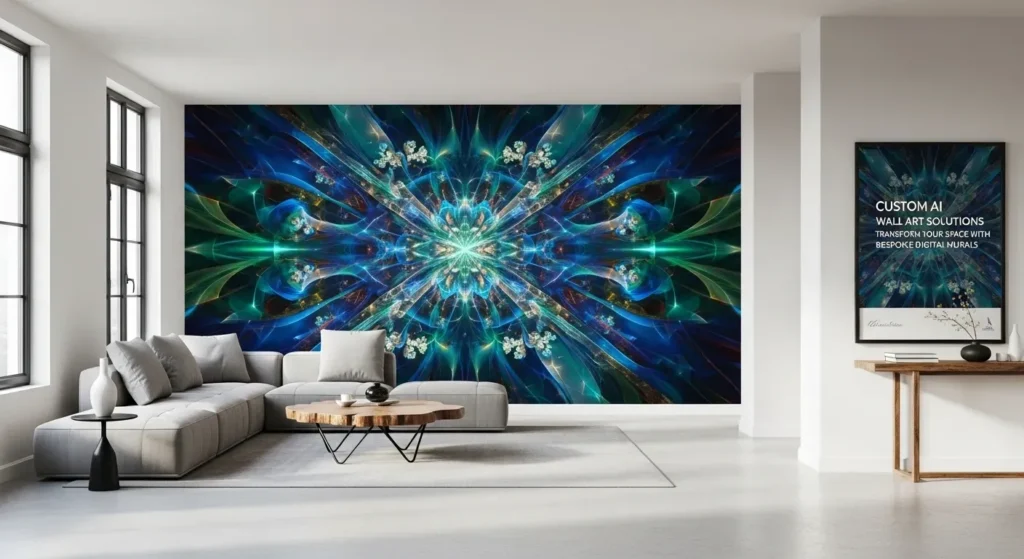
Monetization Strategy 4: How to Make Money with AI Art in Graphic Design
The graphic design industry is evolving rapidly with the integration of AI. Rather than replacing designers, AI tools are empowering them to work faster, more efficiently, and create truly innovative visuals. By mastering AI-powered design tools, you can offer cutting-edge graphic design services that stand out in a competitive market and truly make money with AI art.
Learn to Use AI-Powered Design Tools:
- 1. AI Image Generators: – Tools: Midjourney, DALL-E, Stable Diffusion, NanoBanana. – Application: Creating unique illustrations, abstract backgrounds, custom icons, realistic product mockups, textures, and even initial logo concepts. These tools are invaluable for generating diverse visual assets quickly.
- 2. Vector Graphics & AI Integration: – Tools: Adobe Illustrator (with AI-powered plugins like Astute Graphics), Affinity Designer. – Application: While core vector design is still manual, AI can assist with image tracing, generating patterns, and suggesting color palettes. Some AI tools can even convert raster images to vector.
- 3. Layout & Branding: – Tools: Canva (with its growing AI features for text, image generation, and design suggestions), Adobe Express (AI-powered content creation), Adobe InDesign. – Application: AI can help with generating initial layout ideas, suggesting font pairings, and creating consistent brand elements across various collateral.
- 4. Video & Animation: – Tools: Invideo, Veed, Synthesia, HeyGen. – Application: Generating short promotional videos, animated explainers, motion graphics, and even AI avatars for presentations.
Services to Offer:
- Marketing Visuals: Create compelling images and graphics for digital ads (Facebook, Instagram, Google Ads), banner ads, and print marketing materials. Use AI to generate multiple ad variations quickly for A/B testing.
- Brand Identity Design: Develop unique logos, brand style guides, color palettes, and typography using AI for conceptualization and iteration. Generate mockups of how the brand would look on various products.
- Promotional Videos: Produce short, engaging videos for product launches, service explanations, or social media campaigns, leveraging AI for animation and visual effects.
- Social Media Content Creation: Design a consistent and eye-catching feed for clients, including posts, stories, and reels. AI can help generate trending visual styles and content ideas.
- Website Graphics: Create custom icons, hero images, banners, and illustrations that enhance website aesthetics and user experience.
Websites to Offer and Sell These Services:
- Freelance Platforms: – Upwork: Connects freelancers with clients worldwide for various design projects. – Fiverr: Great for offering specific, quick-turnaround AI design ‘gigs’. – Toptal: For highly skilled and vetted designers. – Freelancer.com: Another broad platform for freelance work.
- Professional Portfolios: – Behance/Dribbble: Showcase your best AI-powered design projects to attract potential clients. – Personal Website: Create your own professional site to present your portfolio, services, and testimonials effectively. – LinkedIn: Network with potential clients and share your work in a professional setting. – Instagram: Visually driven, perfect for showcasing AI art and design projects to a broader audience.
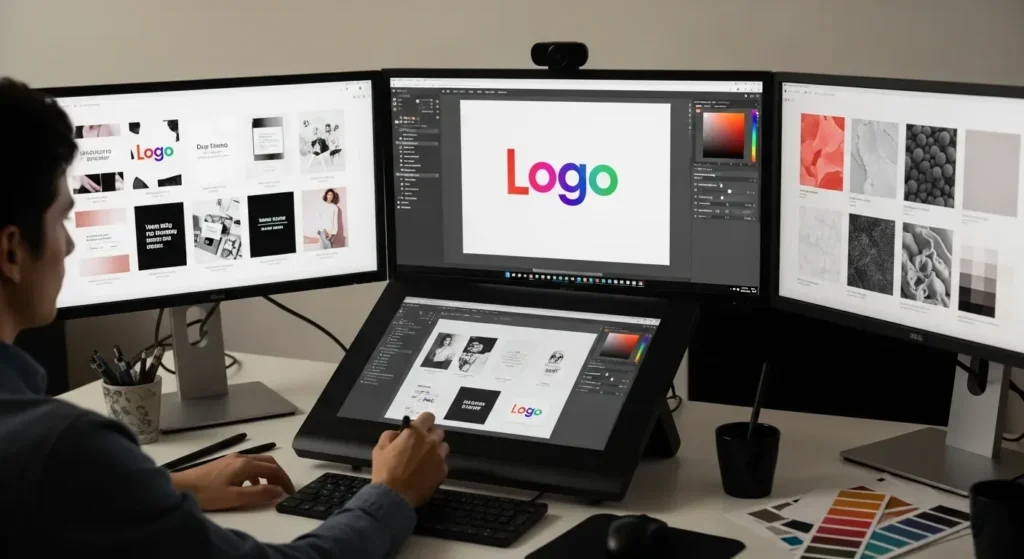
From Skeptic to AI Art Entrepreneur
I remember vividly my first interaction with an AI art generator. It was early 2022, and DALL-E mini (now Craiyon) was making the rounds. My initial attempts were comical – fuzzy, distorted images that barely resembled my prompts. I dismissed it as a fleeting trend, a fun toy, but certainly not a serious artistic tool or a reliable way to make money with AI art.
A few months later, a friend showed me some incredible pieces they generated with Midjourney. The detail, the composition, the sheer artistic quality blew me away. It was my ‘aha!’ moment. I realized this wasn’t just a toy; it was a powerful co-creator. I started experimenting, just for fun, generating minimalist landscapes and abstract patterns. One evening, on a whim, I uploaded a few of my favorite pieces to Etsy as digital downloads.
To my surprise, within a week, I sold a print. Then another. It wasn’t a fortune, but it was proof. Someone valued what AI and I had created together. That small success ignited a passion. I began diving deeper, learning prompt engineering, understanding image editing, and exploring the ethical considerations. The journey from skeptic to seeing the tangible potential of AI art has been exhilarating, and it taught me that the biggest opportunities often lie just beyond our initial assumptions. It’s about being open to new tools and willing to learn, adapt, and experiment to successfully make money with AI art.
The experience reinforced that while AI can generate the visuals, the human touch — the curation, the refinement, the understanding of market needs, and the ethical responsibility — is what truly brings value and creates a sustainable business.
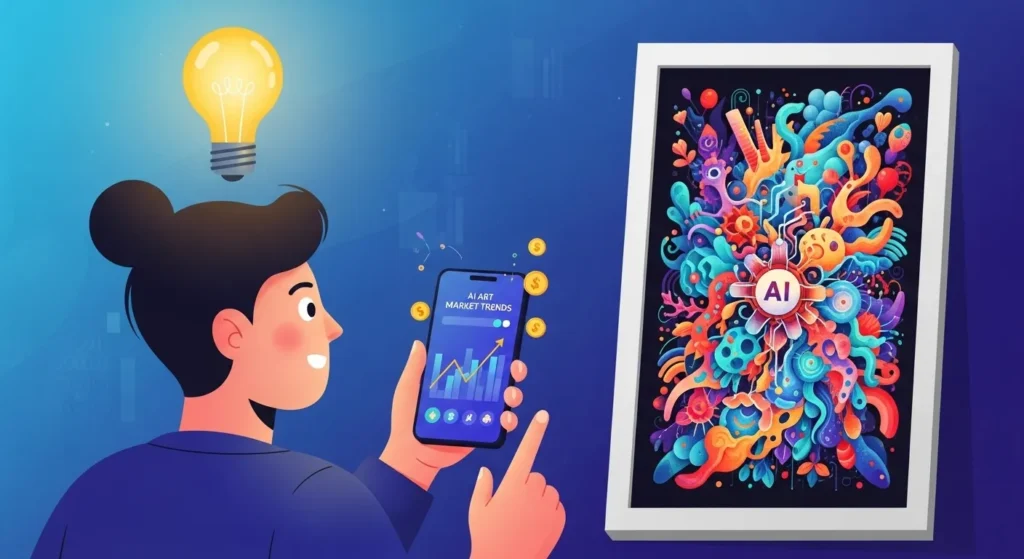
Essential Tips for Success When You Make Money with AI Art
Navigating the rapidly evolving world of AI art requires more than just mastering the tools. Here are crucial tips to ensure your success when you make money with AI art:
- Continuous Learning: AI technology is advancing at an incredible pace. Stay updated with the latest tools, features, and techniques. Follow AI art communities and thought leaders.
- Ethical Considerations and Copyright: Understand the current landscape of AI art copyright and ethical use. Be transparent about AI’s role in your creations and respect existing intellectual property. Some platforms may have specific rules regarding AI-generated content.
- Building a Strong Portfolio: Curate your best AI art and design projects into a professional portfolio. This is your most powerful marketing tool, demonstrating your skills and aesthetic vision.
- Networking: Connect with other AI artists, designers, and entrepreneurs. Collaboration and community support can provide invaluable insights and opportunities.
- Market Research: Continuously analyze market trends, identify profitable niches, and understand your target audience’s needs and preferences. This will help you tailor your AI art products and services for maximum impact.
- Focus on Value: While AI automates creation, your unique vision, quality control, customer service, and marketing efforts are what truly add value and differentiate your offerings.
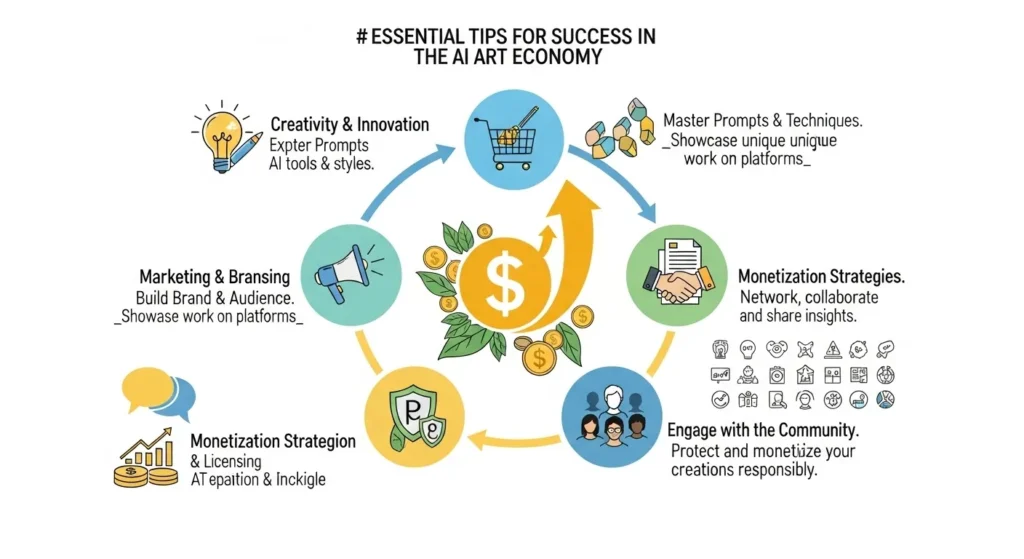
Conclusion
The advent of AI art has opened a Pandora’s Box of creative and entrepreneurial possibilities. We’ve explored just a few of the exciting avenues for how to make money with AI art, from selling captivating printables and illustrating children’s books to launching automated YouTube channels, offering bespoke wall painting services, and leveraging AI for modern graphic design.
The key to success in this new landscape isn’t just about the AI tools themselves, but how you, the human creator, wield them. Your creativity, strategic thinking, understanding of market needs, and commitment to quality and ethical practices will be your most valuable assets. Embrace the learning curve, experiment fearlessly, and continuously adapt to the evolving technology.
The future of art and commerce is undeniably intertwined with AI. By taking action today, you can position yourself at the forefront of this revolution, transforming pixels into profit and turning your artistic vision into a thriving business. Learn how to make money with AI art and unlock your full creative potential. The canvas is digital, the brush is an algorithm, and the opportunities are limitless. What will you create next?
